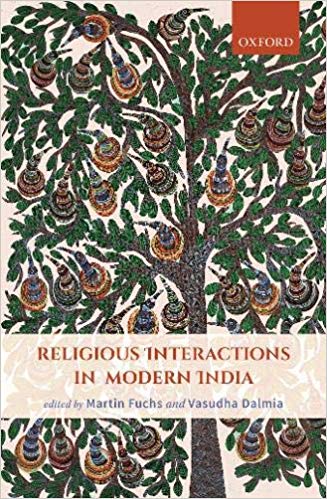It is a pleasure to read a book of scholarly essays such as the one under review, where a diverse set of authors have contributed essays that are both informative and insightful. These essays are the outcome of a conference held in 2010 on negotiating religious identities in colonial India. The thread that holds these essays together is the creation of a new identity for each of the religious groups that are discussed here. The editors prefer calling it ‘the tightening of collective identities’, except that some of these identities, like that of Dadupanthis (discussed by Monika Hortsmann) and Sikhs (discussed by Anne Murphy), were so amorphous till just about a century ago that it would be unfair to use the word ‘tightening’ for the transformations that are discussed by the authors. Creation of a new identity may be a more appropriate description.
The essays are about the relationship between Indians of colonial times and their religions. Religion has been the only lasting ideological force in human societies to provide meaning to the lives of people. At the same time, at least in India of the twentieth century, we have seen that the manifestation of religion inspired behaviour in real life has caused much trauma and distress to people. It goes without saying that a true, proper and correct understanding of all religions suggests that they all are full of love and instruct their followers to love each other. Real life is a little different. The Partition of India in 1947 was but one example when the people of India did a dance of death inspired by religion. Professor Bipan Chandra, the historian, was fond of saying that such people were swayed by false consciousness, which had nothing to do with religion. He insisted that they suffered from an inability to understand what really ailed them and hence were given to fighting with each other in the name of religion. Over time it became clear that experiencing death and destruction was not sufficient to stop Indians from such a religion inspired dance of death. It was then, three decades after Independence, that the Constitution of India was amended to effectively outlaw religion from the life of the Indian state. However, that was not sufficient to stop people getting swayed into political fervour in the name of religion. So, why and how do the people of India relate to their religion? The answers are neither easy nor straightforward, especially given the fact that Indians in real life, in their lives away from the pages of scholarly writing, are quite confused about what constitutes their religion. Till recent times we even had a group of people in India who called themselves and were called by their neighbours ‘Hindu Muslims’. It was the colonial enumerators who insisted that they were not Hindus but Muslims. The thirteen essays brought together in this volume take us a step forward in search of understanding the complex relationship between Indians and their religions.
The basic template for the essays is provided by the idea of modernity, a religious existence in a world where social and political institutions are not guided by religion. Each contributor struggles with the relative absence of institutional underpinnings in the religions of India, especially Hinduism. Nine of the essays are on the amorphous Hinduism as is practiced in India; two are on Islam and Muslims; one on Sikhism; one on Christianity; one on the political manifestations of religion; and one on the critique of religion that hangs on the writings of Baba Saheb Ambedkar.

